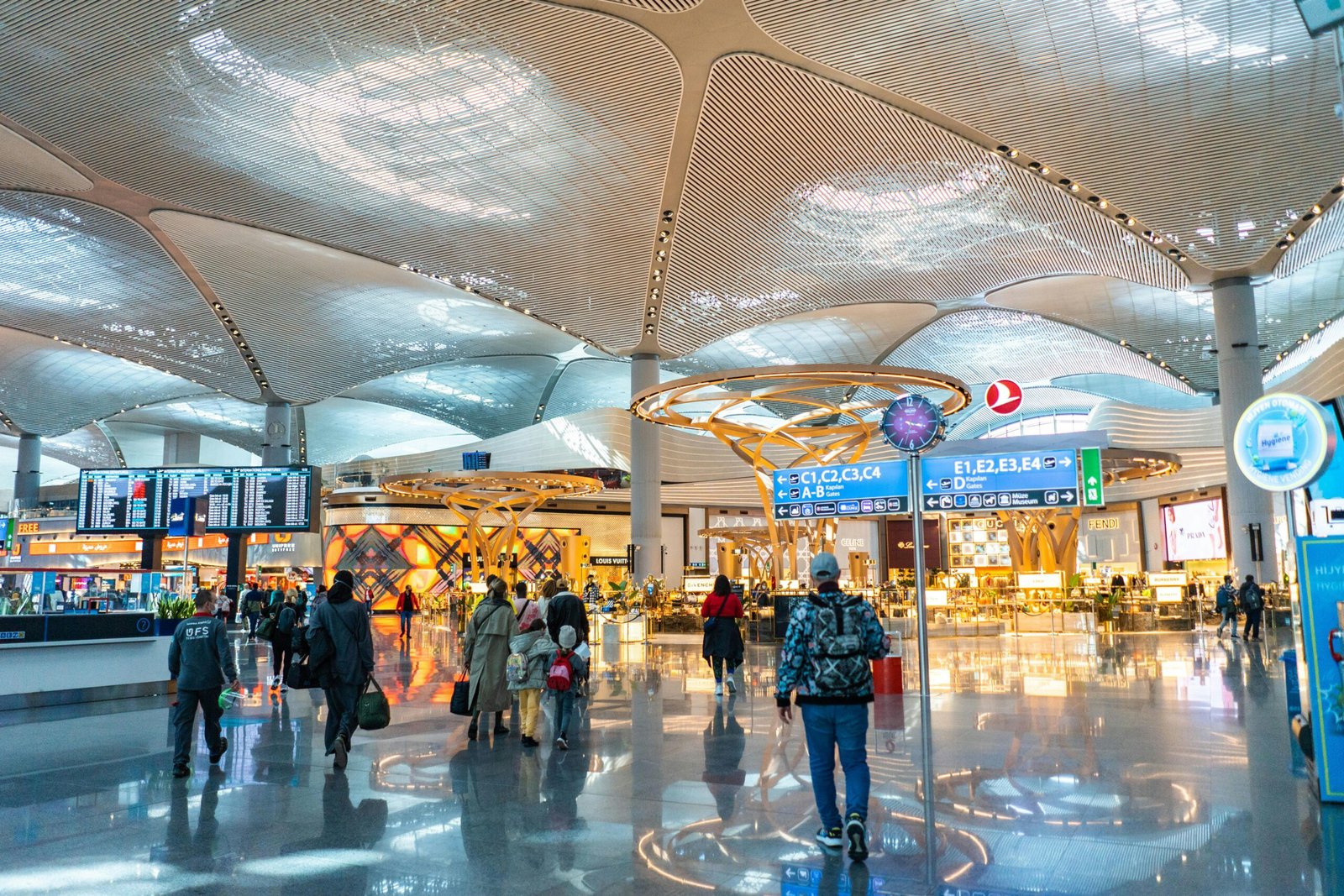The usual visa application routine is that you locate your destination country’s embassy near you, go there and submit your application.
Or, you start the application online and go to the embassy to complete other processes like biometric and passport submission.
However, with e-Visa, this is not the case. Things are done differently – actually, in a lovely, less stressful way.
What is an e-Visa?
An e-Visa (which is the short form of electronic visa) is a digital version of a traditional visa that is issued electronically by a country’s government.
It allows you to enter the issuing country without needing a physical stamp or sticker on your passport.
With e-Visa, everything is done online – you can call it a part of a modern visa application system.
It is designed to make the whole visa application process easier, more convenient, and less stressful.
Unlike your regular visa, which you have to physically go to an embassy or consulate to apply, e-Visas don’t need all that.
You apply for it online, and it is issued to you electronically, usually via email.
If you want to apply for an e-Visa, you simply go through a government portal. You won’t visit any embassy or consulate in person.
Everything is done through the internet – you will submit your details, pay the necessary fees, attach all required documents and even get aproval – all online.
Once approved, the e-visa will be sent to your email, usually as a PDF document.
You can then print it out or save it on your phone and present it, along with your passport, upon arrival at your destination country.
That’s it!
For example, let’s say you want to visit India. Instead of going to the Indian embassy and waiting in line, you go online, fill out a form, upload your passport, pay the visa fee, and a few days later, you get your e-Visa by email.
Just like a regular visa, when an e-visa is issued to you, its validity, number of entries allowed, and permitted duration of stay will be clearly stated on it.
More features of an e-Visa
While the idea of e-visa sounds great, it is not used in all forms of travel.
- E-visas are usually used for short stays, like when you are visiting for 30 to 90 days.
- You will see e-Visas on people who are travelling for tourism, business visits, medical treatments, or those who want to attend conferences.
- You can use them for a single or multiple entry.
- When an e-visa is issued to you, it will be connected to your passport number.
One major advantage of the e-visa is that it saves time and effort. Because there is no need for embassy visits, you get things done faster.
In addition, e-visas also support contactless processing, which has become very important in a post-pandemic world.
It gives governments the chance to manage and monitor incoming travellers efficiently, this is because e-visa data is stored and tracked digitally.
How is an e-Visa different from a regular visa?
The table below shows the difference between an e-visa and a regular visa.
| Feature | E-Visa | Regular Visa |
|---|---|---|
| Application Method | Applied online via official immigration websites | Applied physically at an embassy or consulate |
| Document Submission | Documents are uploaded online as scanned copies | Original documents must be submitted in person |
| Processing Time | Faster – usually processed within a few days | Slower – can take several days to weeks |
| Cost | Generally cheaper due to minimal admin charges | Can be more expensive due to processing and service fees |
| Biometric Requirement | Usually not required | Often required (fingerprints, photo capture, etc.) |
| Visa Format | Digital approval sent via email (no physical sticker) | Visa sticker or stamp placed inside the passport |
| Entry Points | Limited to selected airports or entry points | Accepted at all official borders and ports of entry |
| Types of Visas Offered | Mostly short-term (tourist, business) | Covers all types (tourist, student, work, permanent, etc.) |
| Interview Requirement | No interview required in most cases | Usually requires an in-person interview |
| Application Convenience | Highly convenient – can apply from home | Less convenient – must attend the embassy or the visa centre |
| Security Checks | Basic checks performed | More thorough background and security screening |
| Country Examples | India, Turkey, Kenya, UAE | USA, Canada, UK, Germany, France |
From the above, you can see clearly that an e-Visa is more convenient for tourists and business travellers.
Types of e-Visas
There are many categories of e-visas, depending on the purpose of your visit.
| E-Visa Type | Purpose | Example |
|---|---|---|
| Tourist E-Visa | For leisure travel, holidays, sightseeing | India, Turkey, Kenya |
| Business E-Visa | For meetings, conferences, and deals | UAE, Singapore |
| Medical E-Visa | For treatment abroad | India, Thailand |
| Transit E-Visa | For short stopovers or connecting flights | Ethiopia, Sri Lanka |
| Student E-Visa | For academic purposes (rare in e-format) | Some countries allow this |
Who can apply for an e-Visa?
Not all countries allow e-Visas, and not all travellers are eligible. But many countries have e-Visas for people from selected countries.
You can apply if:
- Your destination country allows e-Visas
- You have a valid passport
- You’re applying for a short-term visit (tourism, business, medical, etc.)
Disadvantages of an E-Visa
Here are some disadvantages of the e-visa:
- Unlike the regular visa, not all countries have e-visas, and not all nationalities are allowed to apply.
- One thing that we enjoy with a regular visa is face-to-face support when you visit an embassy for any issue; with an e-visa, you don’t have that luxury.
- With an e-visa, you will mostly be allowed a short stay, not a long one and no work permits.
- Fixing an error after submission can be difficult or impossible.
- If you face problems, getting fast help online is always hard.
- It can be hard to understand what documents you need to upload.
List of countries that offer e-Visas
Below are some countries that have e-Visas:
| Country | E-Visa Available For |
|---|---|
| India | Tourism, Business, Medical |
| Turkey | Tourism, Business |
| Kenya | Tourism, Business, Transit |
| Australia | eVisitor & ETA for eligible countries |
| United Arab Emirates | Tourism and short visits |
| Sri Lanka | Tourism, Transit |
| Vietnam | Tourism, Business |
| Thailand | Tourism, Medical |
| Cambodia | Tourism, Business |
| Bahrain | Tourism, Business |
Note: The list is growing as more countries adopt digital visa services.
What can you use an e-Visa for?
You can use an e-Visa for:
- Tourism: Going for vacation, sightseeing, or visiting friends/family
- Business: Attending meetings, conferences, or short-term business visits
- Medical: Getting treatment or medical checkups
- Transit: Passing through the country on your way to another place
Note: You can’t use e-visas for extended stays. If you want to study, work, or move permanently, you’ll need a regular visa.
How to apply for an e-Visa
To apply for an e-visa:
Step 1: Go to your destination country’s immigration website
Example: For Turkey → https://www.evisa.gov.tr
Step 2: Fill out the online application
Put your details (name, passport info, travel plans)
Step 3: Upload documents
Upload your passport photo, scanned international passport and any other required documents.
Step 4: Pay the visa fee
You can use a debit or credit card to make your payment
Step 5: Wait for a decision to be made on your application
It usually takes between 24 -72 hours, sometimes less, to get a decision.
Step 6: Get your e-Visa by email
Print it or save it to your phone to show at the airport.
Is the e-Visa safe?
Yes, e-Visas are safe as long as you apply through official government websites.
Many countries use encrypted, secure platforms for their e-visas.
How much does an e-Visa cost?
The cost of an e-visa depends on the country issuing it. some cost:
-
-
- India: Around $25–$100.
- Turkey: Around $60
- Kenya: Around $51
- Sri Lanka: Around $20
- Cambodia: Around $30
-
Where to apply for e-Visas (Official government websites)
To apply for an e-Visa, make sure you go through the official immigration website of the issuing country.
For example, you have:
- India: https://indianvisaonline.gov.in
- Turkey: https://www.evisa.gov.tr
- Kenya: https://www.evisa.go.ke
- Vietnam: https://evisa.xuatnhapcanh.gov.vn
- Sri Lanka: https://eta.gov.lk
Avoid third-party sites. If you are travelling for a short stay, applying for an e-visa is a smart choice.

